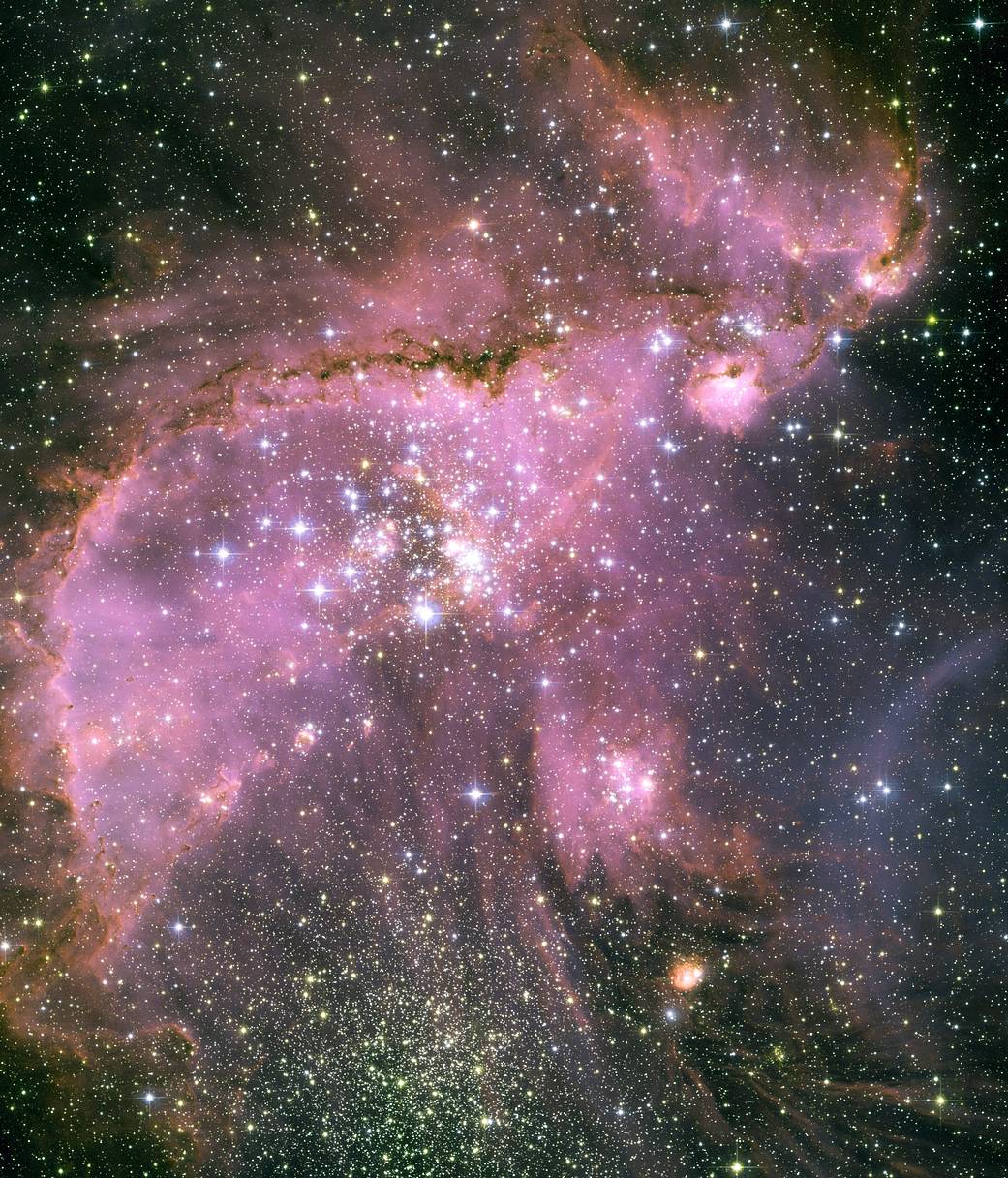Hubble telescope spies brilliant star cluster in Milky Way's neighbor galaxy

Just outside the Milky Way, about 210,000 light-years from the Earth, lies the Small Magellanic Cloud. While it may seem a humble shadow of the Milky Way, it’s a galaxy in its own right andfascinates astronomers since it's a hotbed of star formation.
Now, the Hubble Space Telescope has peered deep into the heart of the SmallMagellanic Cloud to reveal the bright star cluster NGC 346 at its core. NGC 346 isa dynamic place where hot new stars push and pull at the gas and dust that surround them, so it's filled with clumps of young blue stars, dominating Hubble's view in the new image, which NASA released Monday (Aug. 30).
Related: How many stars are in the Milky Way?
"A torrent of radiation from the cluster's hot stars eats into denser areas creating a fantasy sculpture of dust and gas," NASA officials wrote in an image description. "The dark, intricately beaded edge of the ridge, seen in silhouette by Hubble, is particularly dramatic. It contains several small dust globules that point back towards the central cluster, like windsocks caught in a gale."
All that radiation crashes into the dust and gas around it, eroding it and exposing even more star-forming regions.
And as that happens, all the dust and gas gets funnelled away along the lines of the radiation's path. It all adds up to create a spectacular shadowplay for Hubble's benefit.
Follow us on Twitter @Spacedotcom and on Facebook.
Breaking space news, the latest updates on rocket launches, skywatching events and more!

Rahul Rao is a graduate of New York University's SHERP and a freelance science writer, regularly covering physics, space, and infrastructure. His work has appeared in Gizmodo, Popular Science, Inverse, IEEE Spectrum, and Continuum. He enjoys riding trains for fun, and he has seen every surviving episode of Doctor Who. He holds a masters degree in science writing from New York University's Science, Health and Environmental Reporting Program (SHERP) and earned a bachelors degree from Vanderbilt University, where he studied English and physics.
